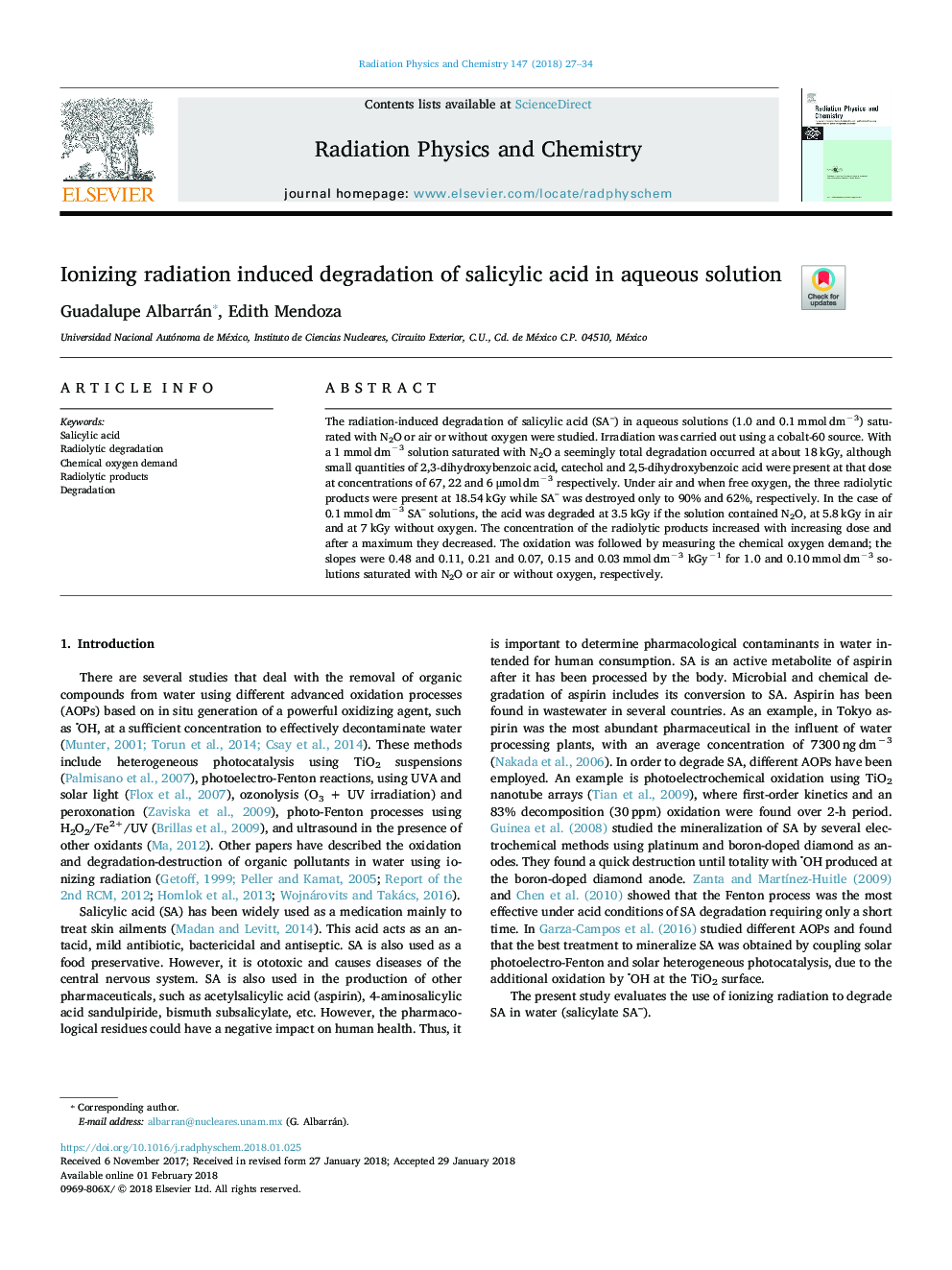| Article ID | Journal | Published Year | Pages | File Type |
|---|---|---|---|---|
| 8251448 | Radiation Physics and Chemistry | 2018 | 8 Pages |
Abstract
The radiation-induced degradation of salicylic acid (SA-) in aqueous solutions (1.0 and 0.1â¯mmolâ¯dmâ3) saturated with N2O or air or without oxygen were studied. Irradiation was carried out using a cobalt-60 source. With a 1â¯mmolâ¯dmâ3 solution saturated with N2O a seemingly total degradation occurred at about 18â¯kGy, although small quantities of 2,3-dihydroxybenzoic acid, catechol and 2,5-dihydroxybenzoic acid were present at that dose at concentrations of 67, 22 and 6â¯Î¼molâ¯dmâ3 respectively. Under air and when free oxygen, the three radiolytic products were present at 18.54â¯kGy while SA- was destroyed only to 90% and 62%, respectively. In the case of 0.1â¯mmolâ¯dmâ3 SA- solutions, the acid was degraded at 3.5â¯kGy if the solution contained N2O, at 5.8â¯kGy in air and at 7â¯kGy without oxygen. The concentration of the radiolytic products increased with increasing dose and after a maximum they decreased. The oxidation was followed by measuring the chemical oxygen demand; the slopes were 0.48 and 0.11, 0.21 and 0.07, 0.15 and 0.03â¯mmolâ¯dmâ3 kGyâ1 for 1.0 and 0.10â¯mmolâ¯dmâ3 solutions saturated with N2O or air or without oxygen, respectively.
Related Topics
Physical Sciences and Engineering
Physics and Astronomy
Radiation
Authors
Guadalupe Albarrán, Edith Mendoza,
